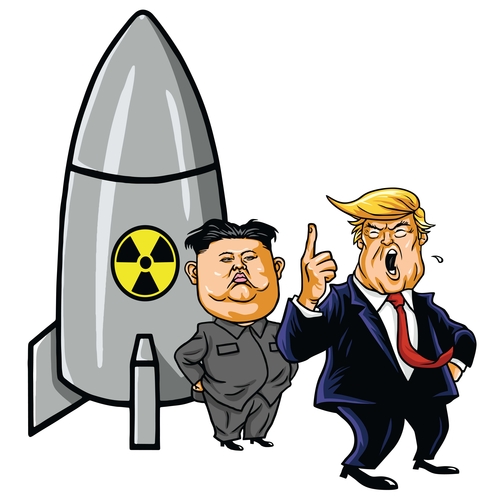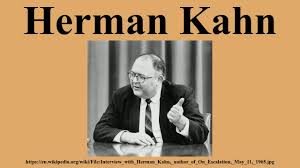 Looking back over the past few decades, I’d say that some of my most useful and profitable investment principles came from things I’ve read or experienced that had nothing to do with the stock market.
Looking back over the past few decades, I’d say that some of my most useful and profitable investment principles came from things I’ve read or experienced that had nothing to do with the stock market.
I’ve already written about my first experience as a substitute newspaper delivery boy, filling in at age 11 for the 13-year-old who delivered the papers on our street. He made it sound simple: “You pick up the papers from the route boss on the corner, and you deliver them to the houses on this list. You go around to the houses and collect the money at the end of the week. The next day, you pay the route boss for the papers you took, and you get to keep all the money that’s left over.”
Every word in that explanation is true. However, he left out one crucial bit of info: rather than pay cash to the paperboy, a third or more of the customers mailed in a check every month to the newspaper office. After the check cleared, the office mailed a check to the (regular) paperboy. This was my first experience with paid work (other than leaf raking, lawn mowing or snow-shoveling, for which I got paid at the end of the day). It provided an instant, valuable lesson: before agreeing to any sort of business deal, you need to know all the details, even if this forces you to ask awkward questions.
Focus on plain-vanilla stocks and bonds
Over the years, this lesson has kept me out of all sorts of money-losing investments and unfair or poorly designed business proposals. It also explains how I came around to the view that you should focus on “plain vanilla” stocks and bonds in your portfolio, and avoid complex investment products, especially those with an insurance component.
Investment products profess to offer a “deal” that has more profit potential and/or less risk than you get from plain vanilla stocks and bonds. In my experience, what you lose on the one side of the promise is less valuable than what you gain (if anything) on the other. The deal in investment products is, however, much more complicated than the deal on the plain vanilla alternative.
It’s easy to find references to the hypothetical gains and advantages of investment products: just look in the marketing brochure, or ask the salesperson. To find out the downside of the product, you have to dig through many pages of legalese/fine print. The seller always has an information advantage over the buyer.
As a group, these products are likely to provide a lower long-term return than what you’d expect from a portfolio of high-quality stocks. But they provide a higher return to the salespeople, compared to what they can earn by selling you a portfolio of high-quality stocks. So, over a few decades, my first newspaper delivery experience at age 11 led me to advise against buying the many types of investment products that expose investors to costly conflicts of interest.
I learned a higher-level lesson about investing from the work of military-strategist/futurist Herman Kahn, author of On Thermonuclear War, Thinking About the Unthinkable and On Escalation. I first heard about Kahn in the early 1960s, when I had just entered high school. This was the height of the Cold War. Like many people back then, I worried that a nuclear war could conceivably break out at any time, with little or no warning. Scientists warned that if war came, “the living would envy the dead.” I tried not to think about it.

In his book, Kahn said that thermonuclear war would not start overnight. Based on his study of military history, he said the world was more likely to go through 44 stages between the Cold War and World War III. He likened the 44 stages to rungs on a ladder, and divided them into seven subsets.
He labelled the first subset — rungs one through three — as “Subcrisis Maneuvering”; the second group, rungs four through nine, as “Traditional Crises”; the third, 10 through 20, as “Intense Crises”; the fourth, 21 through 25, as “Bizarre Crises”; the fifth, 26 through 31, as “Exemplary Central Attacks”; the sixth, 32 through 38, “Military Central Wars.”
Kahn refers to the passage from subset 6 to subset 7 — that is, from rung 38 to rung 39 — as “The City Targeting threshold.” He labels the final subset, number seven — rungs 39 through 44 — as “Civilian Central Wars.”
In Kahn’s ladder, the first use of nuclear weapons occurs at rung 23 (Local Nuclear War, Military). Civilians only start to become targets at rung 29 (Exemplary Attacks on Population). Civilians become a focus at rung 42, (Civilian Devastation Attack). Rung 43 is “Some Other Kinds of Controlled General War.” Rung 44 is World War III, but Kahn called it “Spasm or Insensate War.”
I found all this greatly reassuring. It gave me reason to believe that if war was coming, it would follow some sort of pattern, rather than come as a total surprise, like a global car crash. Of course, I was still in my teens. Adults differed widely in their attitude toward Kahn and his views.
Some people felt Kahn’s nonchalant writing about thermonuclear war marked him as a heartless monster. (On Thermonuclear War popularized the term “megadeath” — the death of one million individuals.) But Kahn was a jovial, gregarious individual, and this came through in his writing. If he had written in a morose, emotional tone, nobody would have read the book, and that would have been a tragic waste.
Others saw Kahn as an object of ridicule. They loved Stanley Kubrick’s political-satire/black-comedy film, Dr. Strangelove or: How I Learned to Stop Worrying and Love the Bomb. The film’s title character, Dr. Strangelove (played by Peter Sellers), is widely viewed as a parody of Kahn and his unflinching descriptions of the effects of war. It’s less widely known that Kahn collaborated with Kubrick on the script. Some of the film’s funniest lines make use of Kahnian terms, such as “Doomsday Machine.” Others are comical paraphrases of sentences in Kahn’s books. The project appealed to Kahn’s sense of humour.
Spotting unwise or unnecessary risks
Kahn’s work was widely read by high-ranking members of the U.S. and U.S.S.R. government and military. By describing and dissecting Kahn’s 44 stages, politicians and generals on both sides got better at spotting and avoiding unwise or unnecessary risks. In fact, many people give Kahn and his fellow “megadeath intellectuals” some credit for heading off World War III. Instead of world wars, major world powers shifted to regional proxy wars, like the Vietnam war, and the Soviet-Afghan war of the 1980s.
Kahn’s ideas gave me peace of mind in my teens. Decades later, in my investment career, they helped me spot and reject a lot of poorly thought-out investment ideas that were widely viewed as near certainties.
Disregard any North Korea/WWIII scare
I thought investors might be coming under the sway of one such idea, with the initial coverage of the U.S. reaction to North Korean nuclear tests. Initially, Trump warned Kim Jong-Un of dire consequences, and the North Korea dictator predictably reacted with the defiance that worked so well with presidents Obama, Bush and Clinton. Commentators said that North Korean technology had improved a great deal since its previous clash with the U.S. But instead of backing down like his predecessors, Trump repeated his warning in stronger, more explicit, insulting language.
U.S. media sources reacted predictably. A typical headline: “Psychiatrist says Trump is crazy and he’s going to start World War III!” We said you could safely disregard the North Korea/World War III scare. We were confident that Kim Jong-Un is sane enough to know that in any nuclear clash with the U.S., he is virtually certain to wind up like Saddam.
The North Korean nuclear crisis petered out on its own. Instead of launching a missile at the U.S., the North Korean dictator went quiet, and so did talk of World War III. Then North Korea agreed to participate in the February Winter Olympics in South Korea. Then Kim Jong-Un showed interest in a summit meeting with President Trump. The U.S. meeting invitation was, however, conditional on agreeing to discuss denuclearization of the Korean peninsula. In April, Kim Jong-Un agreed to that condition, in a 180-degree reversal of his earlier position.
Fear of North Korean nukes never did catch on with investors. Instead they got caught up in, “Economist says Trump is crazy and is going to spark a trade war by duplicating the Smoot-Hawley tariffs of 1930, which were a cause of the 1930s depression!”
In March we said the worldwide tariffs that Trump says he has in mind for steel and aluminum may simply be opening bids that aim at getting better NAFTA terms out of Canada and Mexico. Now it seems Trump was gunning for China all along. If so, it looks as if it worked. I suspect China used its influence to make North Korea easier for the U.S. to deal with. The U.S. may have agreed in advance to return the favour by being less extreme in U.S./China trade talks. It seems the U.S. has already begun to lighten up.
If we’re in a trade war, we’re on the bottom rung
The trade war scare could drag on for months. Of course, I could be wrong. But if we’re on a ladder that leads to a trade war, I’d say we’re on the bottom rung.
As I often remind you, nobody can predict the future. I do see North Korea’s sudden change of heart as a sign that China has blinked. If so, then the trade war with China will turn out to be about as big a threat as the nuclear war with North Korea.
 Pat McKeough has been one of Canada’s most respected investment advisors for over three decades. He is the founder and senior editor of TSI Network and the founder of Successful Investor Wealth Management. He is also the author of several acclaimed investment books. This article was originally published on April 10, 2018 and has been republished on the Hub with permission.
Pat McKeough has been one of Canada’s most respected investment advisors for over three decades. He is the founder and senior editor of TSI Network and the founder of Successful Investor Wealth Management. He is also the author of several acclaimed investment books. This article was originally published on April 10, 2018 and has been republished on the Hub with permission.

